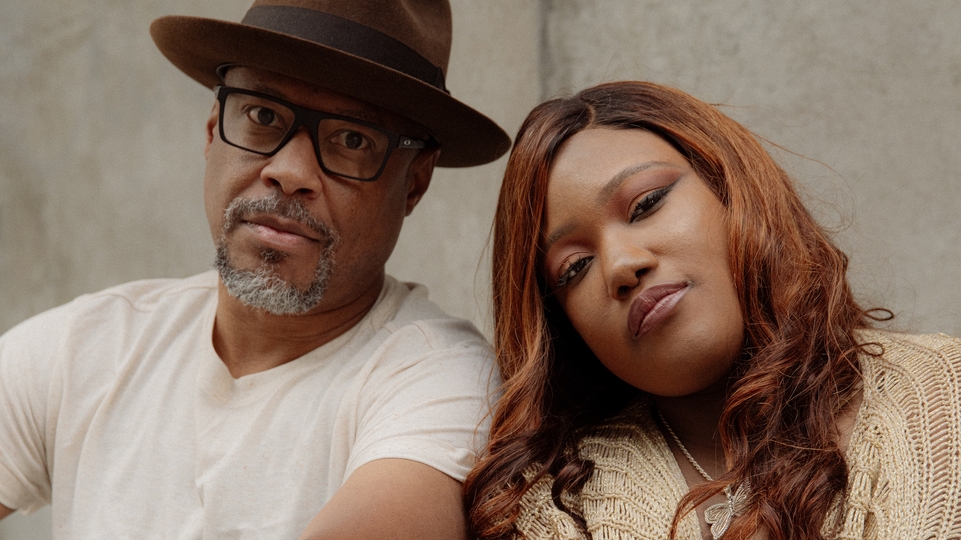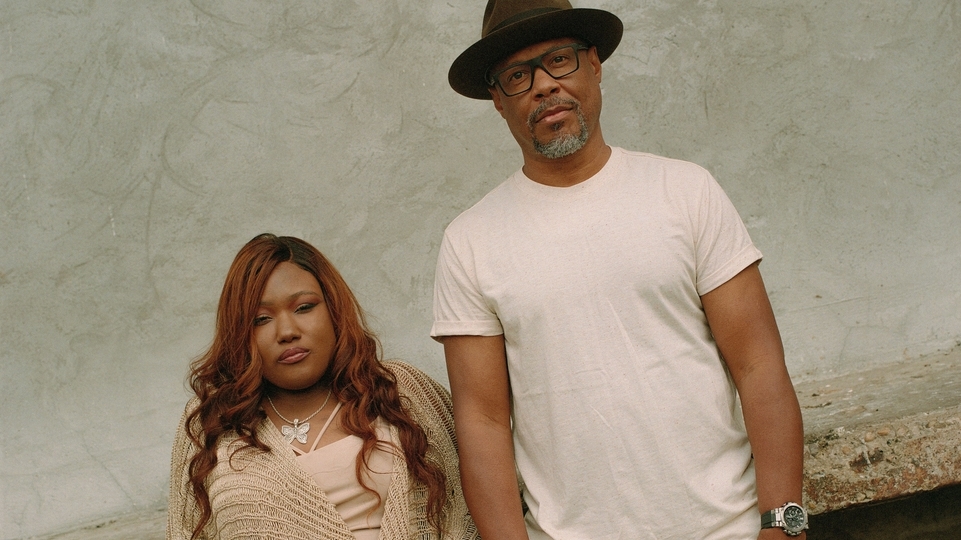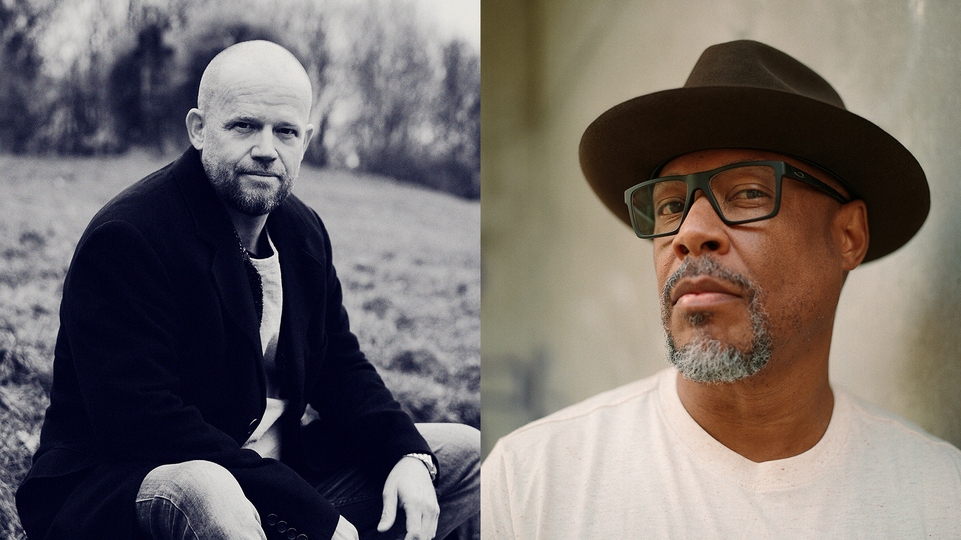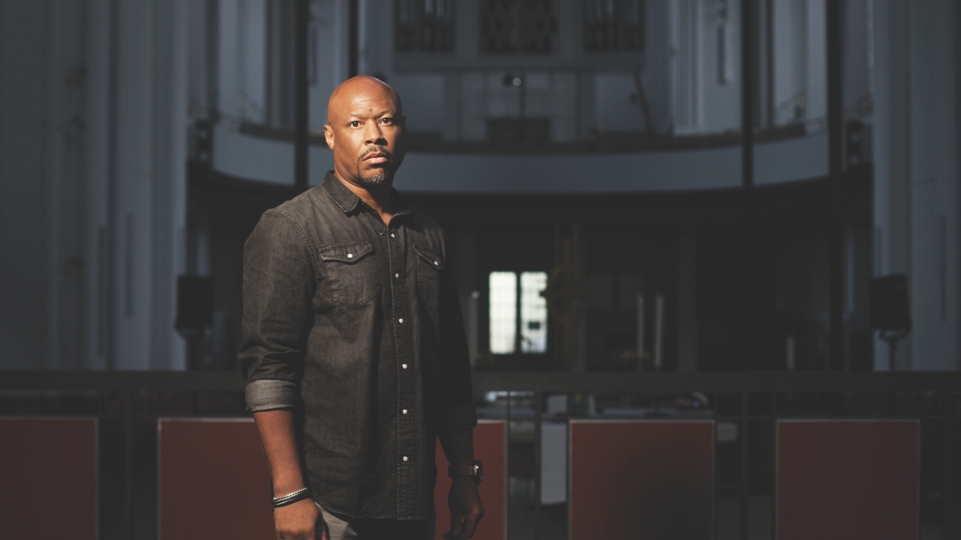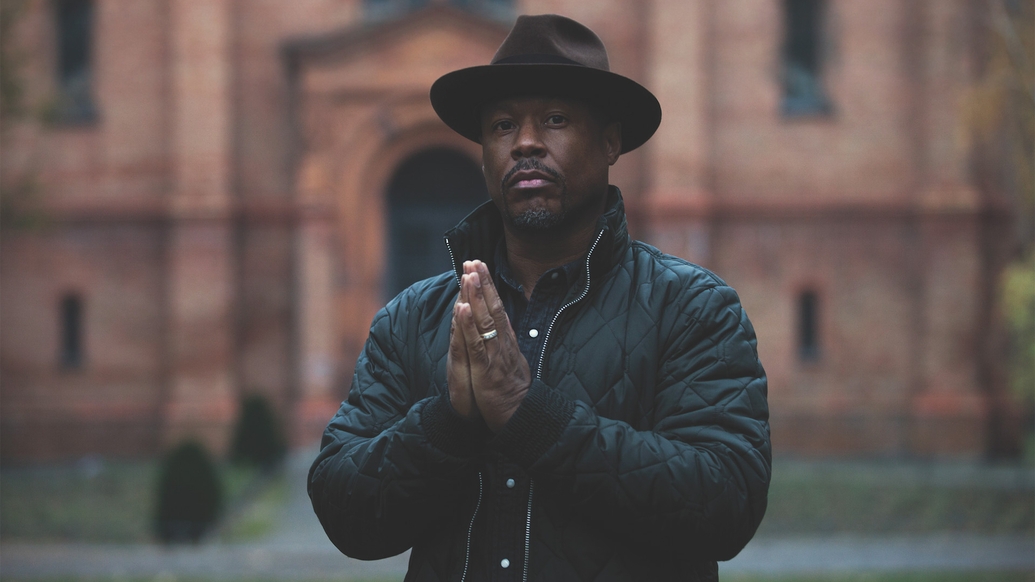
Robert Hood's sanctuary in techno
Tackling extraordinary challenges and pitfalls in his life, Detroit’s Robert Hood is a passionate advocate for the transformative power of electronic music. An ordained Christian minister, we meet him in Berlin after his first European sermon, and before a DJ set at Tresor, to find out how Hood views the church and the club as similar spaces, and why techno can be a force for change...
In the early hours of the morning on November 10, 1938, anti-Semitic rioting raged across Nazi Germany, in a pogrom that saw more than 100 Jews killed and 267 synagogues destroyed by SA paramilitary, alongside thousands of Jewish businesses. The violent attacks, which would go on to become known as the Night Of Broken Glass, or Kristallnacht, saw Jewish homes, hospitals and schools burned and looted, as German authorities watched on. The events would eventually lead to the Holocaust, one of the largest genocides in the history of humanity. It remains one of Europe’s most devastating acts of state terrorism.
On the 80th anniversary of Kristallnacht, Detroit techno pioneer Robert Hood stands at the altar of the church of St. Thomas in Berlin’s Kreuzberg district, delivering his first European sermon to an almost 2,000-strong crowd. “We need to remember that day and make sure events like that are never allowed to happen again,” he booms across the towering neoclassical building, which is bathed in deep blue light, his voice echoing around the looming ceilings. “Let’s come together and stand up against anti-Semitism, racism, homophobia, and any form of hate and discrimination in this world. Let’s light a beacon of love today.
“However, it’s not only [the anniversary of] one of the saddest days in history,” he continues. “Almost 30 years ago, the Berlin Wall began to fall. On that day, not only a wall made of stone and barbed wire fell, but also a symbol. A symbol of separation. A symbol of oppression. Today we also want to remember that day. We want to shout out that we don’t need walls, no barriers in this world, nor in our heads. So, let us share together, tonight, against borders, and against any kind of social or racial exclusion. Let’s build bridges of love [against] the walls that mankind has built.”
A founding member of revolutionary techno collective Underground Resistance (UR), and with a career producing music that spans almost 30 years before becoming an ordained minister in Detroit, Hood built his legacy as a — if not the — forefather of Motor City minimal techno, with an earth-shattering sound that’s in equal parts deep, hypnotic and heavy. After the sermon, he delivers a DJ set alongside music from a gospel choir that includes classics from Floorplan (the alias he began over 20 years ago, before his daughter Lyric made it a duo in recent years). The set includes ‘We Magnify His Name’ and ‘Never Grow Old (Re-Plant)’ (which sees the voice of the late Aretha Franklin boom around the towering church building just months after her death).
Hood speaks a matter of days after the deadliest attack on the Jewish community in American history, at Pittsburgh’s Tree Of Life synagogue, left 11 people dead and seven injured. “There’s so much ugliness in the world, and so much hate,” he laments in a small back room of the church shortly after delivering his sermon. “But we go about our day-to-day lives like everything is alright. Going to the grocery store or on vacation like nothing is wrong. This world is like a fragile egg, and it’s at the edge of a table. Anything could tip it off at any moment. We can’t keep going the way we are. We’re headed for destruction, and we don’t even know it.
“We see hate coming to a boil, and if we’re not careful it’s going to encompass all of us,” he continues. “In politics there’s so much division. For us, the music is that bridge to bring us together. So, we boldly play these tracks to plant seeds in people’s spirits. The music we’re doing is symbolic of tearing down walls. We’re agents of change. We’re about spreading love, the gospel and good news to a lost world.” Hood constantly refers to St. Thomas’ as a sanctuary, and goes on to discuss the parallels, through history, that can be drawn between churches and clubs in the present day as spaces for young people to find that sanctuary.
“People need answers,” he enthuses as the church’s bell tolls overhead. “So we’re seeking refuge. We’re seeking escape from all of the heartache and misery in the world. I remember the Music Institute in Detroit, and one of the first thoughts I had is that it’s like a congregation, and the DJ is like the minister, the preacher. The music was healing people. The music was ministering to the people’s souls. I remember watching how people’s spirits would light up. You’d see the joy on their face. It took us somewhere else. And it was very spiritual, very unearthly, very heavenly, at times. So, it’s almost like a revival. This music and church provide that sanctuary of peace.”
SANCTUARY
Immaculately dressed, Hood wears a black denim shirt, loose-fitting charcoal trousers, black leather boots and a brown Stetson. Married to his wife Eunice Thompson-Hood since 1996, he’s softly spoken, but delivers his answers with clear passion and intent. At 53 years old, he has the relaxed demeanour of a man very much at one with himself — but he goes on to explain how techno saved his own life, offering him sanctuary at a time when he struggled to find answers. “I was so depressed at one point I tried to take my own life,” he says. “I never shared that with anybody. I felt I didn’t have any reason to live. I took some pills hoping I would go to sleep and not wake up. I felt like nobody loved me.”
He apportions his suicide attempt, which happened during his early twenties, in part to unresolved issues from his childhood. Hood’s father, a jazz musician, was murdered when the Detroit techno pioneer was just six years old. “The thought of that was very traumatic for my whole family,” he says. “So it was very rarely talked about in the house, which meant I knew little about it, except that he was found naked with a plastic bag over his head — he’d been asphyxiated. “My father was gone,” he continues. “And I needed him. It was a very formative time in my life. I needed someone to listen to me. It seemed like nobody was, and that nobody cared.”
The murder of Hood’s father came only a few years after his grandparents saved him from almost bleeding to death in his cot after being left for dead as a one-year-old. “They thought I was gone,” he says. “A babysitter had abused me. I didn’t know it all my life, but my grandmother explained to my wife: This is why he’s having some of his issues. Because they’d been unresolved. When my wife told me, it helped me deal with some of my problems and burdens. I was carrying some I didn’t even know about.” Hood says music made him feel he had a reason to live again. “It was my friend when I didn’t have a friend in the world,” he says. “I could put on my headphones and escape. Music gave me something to dream and hope for, and to aspire to. I wanted to be a DJ and a musician. My father was a jazz musician, but I wanted to do this new thing. So, techno and house music gave me that outlet. Those sounds provided me comfort.”
“I knew the experience was invaluable and what I was learning was precious, watching the speed and the accuracy of how [Mad Mike Banks and Jeff Mills] worked, and how many hours they put into their studio time. They were making history, and that was my example. I wanted to be like that”
After spending time in hospital following his suicide attempt, Hood began recording demos on some rudimentary equipment he bought from a pawn shop. By a stroke of fortune, one of the recordings made it into the hands of one of Detroit’s leading techno figures, Mad Mike Banks, who, along with Jeff Mills, he would later go on to form Underground Resistance with. At first, Hood worked as what might now be described as an intern there, running things on the admin side while Mills and Banks were touring: answering the phone, dealing with distributors and, whenever possible, gaining an education in producing techno from two of its early masters.
“I knew the experience was invaluable and what I was learning was precious,” Hood says on his early years in Underground Resistance. “Watching the speed and the accuracy of how they worked, and how many hours they put into their studio time — they would go all day and all night — they were making history, and that was my example. I wanted to be like that.” But Hood’s biggest opportunity was almost sidelined again when he was shot in the face while working at a record store, shortly before Underground Resistance’s raw, four-track techno aesthetic became the talking point of the New Music Seminar in New York. “I had an altercation with a former employee and got blamed for something I didn’t do,” he says. “He pulled out a gun, and as he hit me, [the gun] went off, and I caught some shrapnel in my head. I remember wondering if I was going to make it — I thought I was going to bleed out.”
Fortunately, he survived, and, after Banks and Mills had helped him learn how to stand on his own feet as a producer instead of co-producing his tracks for him, Hood began to develop his own take on Detroit techno. “They were concerned about me as brothers,” he says. “So, I said, ‘I’m going to do this. What elsehave I got?’ I’d been shot in the head. I’d been in a mental hospital. I didn’t have anything else. So, it had to work.”
MAKING CONNECTIONS
Following the interview, Hood spins at iconic Berlin club Tresor, where he first performed live as part of Underground Resistance when they initially started touring outside of the US in the early ’90s. And there must be few better places to see Hood spin, with the famous jail-like iron bars of Tresor — a club now housed in a former power plant in Mitte that’s hugely revered but intimate in size — the perfect aesthetic for his sparse but hard-hitting sound. After walking through the maze of strobe-lit corridors that lead to Tresor’s main room, Hood is stood in the booth, bathed in red light and deep in concentration. Calm and collected behind the decks, he gives off the air of someone who’s plied his craft for years. Slowly chewing gum stood directly underneath a Detroit Techno Militia sticker, one of the many artists and collectives Hood has helped inspire over the years, he EQs the mixer delicately, as hi-hats chatter overhead and snares seem to circulate the room. It’s hot. It’s dark. It’s an intense dancefloor experience. But Hood, who has changed his shirt and Stetson from earlier in the day for a fitted white t-shirt and baseball cap, meticulously rolls out his distinct minimal groove as a lone strobe jitters overhead.
Tresor are set to reissue Hood’s seminal minimal masterpiece ‘Internal Empire’ in February, alongside four other vital Detroit techno records from Jeff Mills, Juan Atkins, Drexciya and Scion. Speaking to Hood, who hails from the city where techno began, in Berlin, which has done so much to invigorate its renaissance in the last 15 years, he points out a number of parallels between the two cities.
“There’s definitely a connection with Detroit coming out of the riots, as the techno artists I came through listening to wanted to escape that, and build something new, and Berlin coming out of the ruins of World War II, trying to create a new future,” he explains as he leaves the church earlier that afternoon. “The same thing for Berlin, leaving the ashes of its past of being separated. That’s where the connection is. They wanted Western culture, but with a new identity aside from being labelled Nazis. We wanted a new identity aside from being labelled black people who were going nowhere. So, it all comes together, that escapism, and trying to build something new on both sides of the Atlantic.”
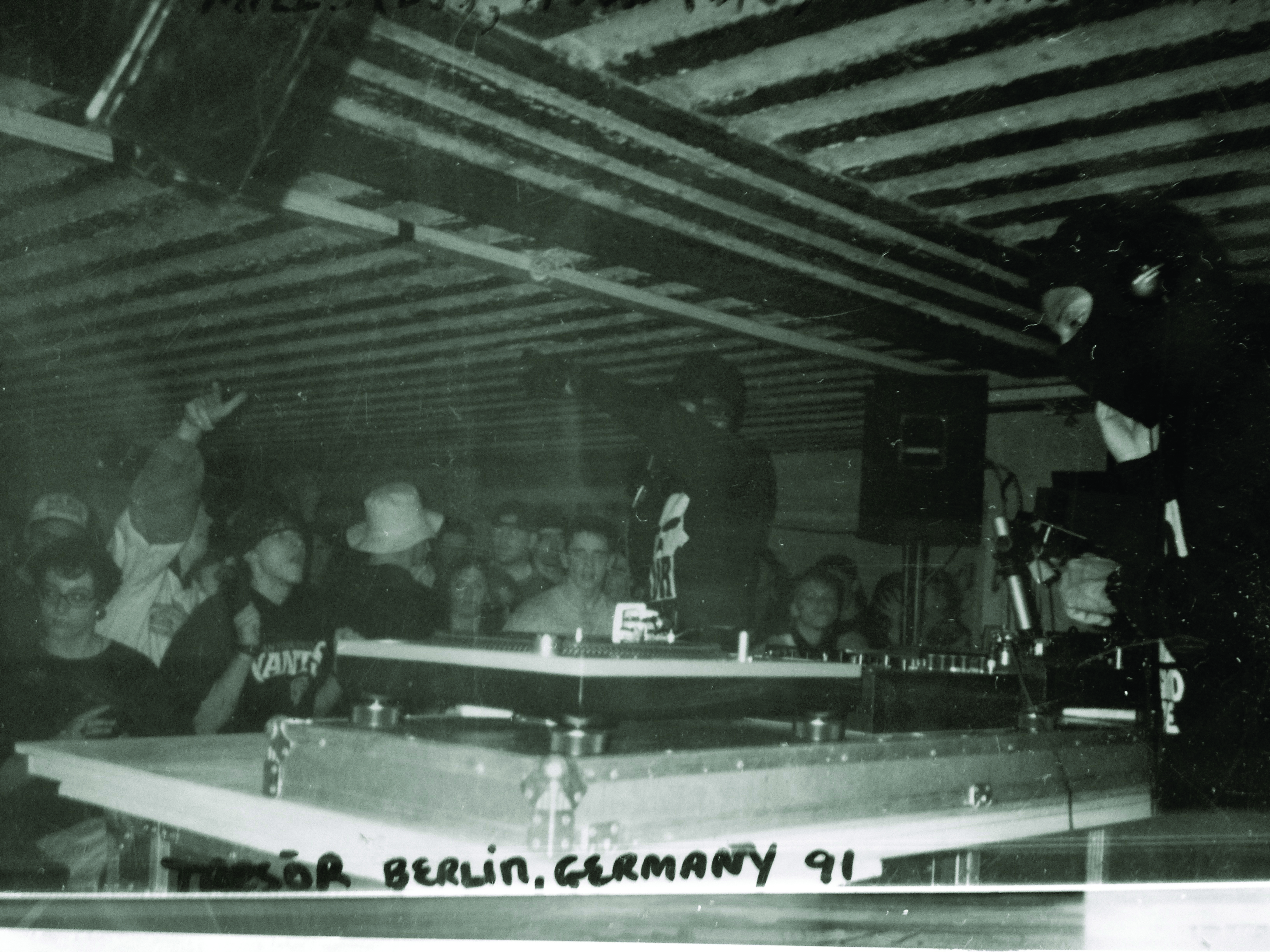
Before going to his hotel ahead of the gig at Tresor, the club’s founder Dimitri Hegemann suggests he drives Hood to the Julia Stoschek Collection in Mitte, where Arthur Jafa’s A Series Of Utterly Improbable, Yet Extraordinary Renditions exhibition is on show. Apex, a seven-minute film that forms part of it, sets ‘Minus’ from Hood’s ‘Internal Empire’ to rapidly-sequenced black and white images that pull from Jafa’s research into the history of black culture. In it, flashing images of John Coltrane, Aretha Franklin, Michael Jackson and catwalk models are set against suffering, war and lynching — to highlight very few. Hood has often talked about the storytelling in his productions, which isn’t something people instantly associate with techno, and after watching the exhibit, he is visibly moved.
“It took me back to summer ’95 when I was working on ‘Internal Empire’,” he says, sipping from a coffee in the bar at the Radisson Blu after moving back to his hotel following the exhibition. “I cancelled all my tour dates for the summer and set my studio up in the living room, so I could watch the world go by. As I worked on the album, and especially ‘Minus’, I began to envision the future. And that’s what hit home. Some guy from LA that I’ve never met before really getting the message in the music, his spirit speaking to mine and chronicling my soul. That was mind blowing.”
The power, beauty, alienation and tension of Jafa’s Apex match the neural potency of Hood’s looping rhythm patterns with incredible effect. But he says his trademark minimalistic sound was partly born out of necessity as opposed to being entirely from design. “I was broke,” he laughs. “I had a little four-track that I got for $50. I had a Roland TR-505 drum machine that I got from the pawn shop. I had an SH-101 that I got from a pawn shop; a Juno-02. It seemed like everybody had state-of-the-art equipment, but I had equipment that was barely working, so I had to squeeze blood out of it. It became natural. It’s like David killing Goliath with five smooth stones. That’s all he needed, his slingshot and his rocks. That’s what I learned to do. Kill giants with what I had.”
TIMELESS WORKS
Few touring DJs possess as many full-length albums that define them in their back-catalog as Hood, with early LPs ‘Internal Empire’ and ‘Minimal Nation’ as vital as ‘Omega’ and last year’s ‘Paradygm Shift’. And his sound has stood the test of time like few others in electronic music. “That’s my whole idea,” he says. “To keep it timeless. The focus [with ‘Internal Empire’] was on creating future music that could guide techno as a whole. My inner voice was telling me that it would be a timeless body of work and a catalyst for minimalism and change. It is difficult to stand out and create something new. And that’s something I always intended. I didn’t wanna sound like Juan Atkins. I didn’t want to sound like Derrick May, or Kevin Saunderson, or even Underground Resistance. I wanted to be me, and I wanted to blaze my own trails. I dealt with the breakdown of the record, the bassline, the drum and the hi-hat. And I gave you the feeling as if it’s a Luther Vandross record. And that’s it. Minimal structure and maximum soul.”
As well as his back-catalog as Robert Hood, he has also been incredibly prolific through a string of aliases, including Floorplan, Monobox, The Vision, Inner Sanctum and others. And he says there’s still more to come. “I’ve got more demos than 2Pac had,” he says. “I’m always revisiting all of these different sides of me. I’ve got so many aliases and different dimensions inside me; you guys have no idea.” In November, Hood also delivered an entry to the ‘DJ-Kicks’ series. The 22-track compilation, which includes four exclusive cuts from the Motor City icon, is raw and driving while also being warm and undulating: exactly what fans want a Hood mix to be. “I wanted to have chapters telling stories from my perspective,” he says. “This is minimal techno, past, present and future, connecting the dots. Robert Hood hasn’t forgotten those true minimal heads."
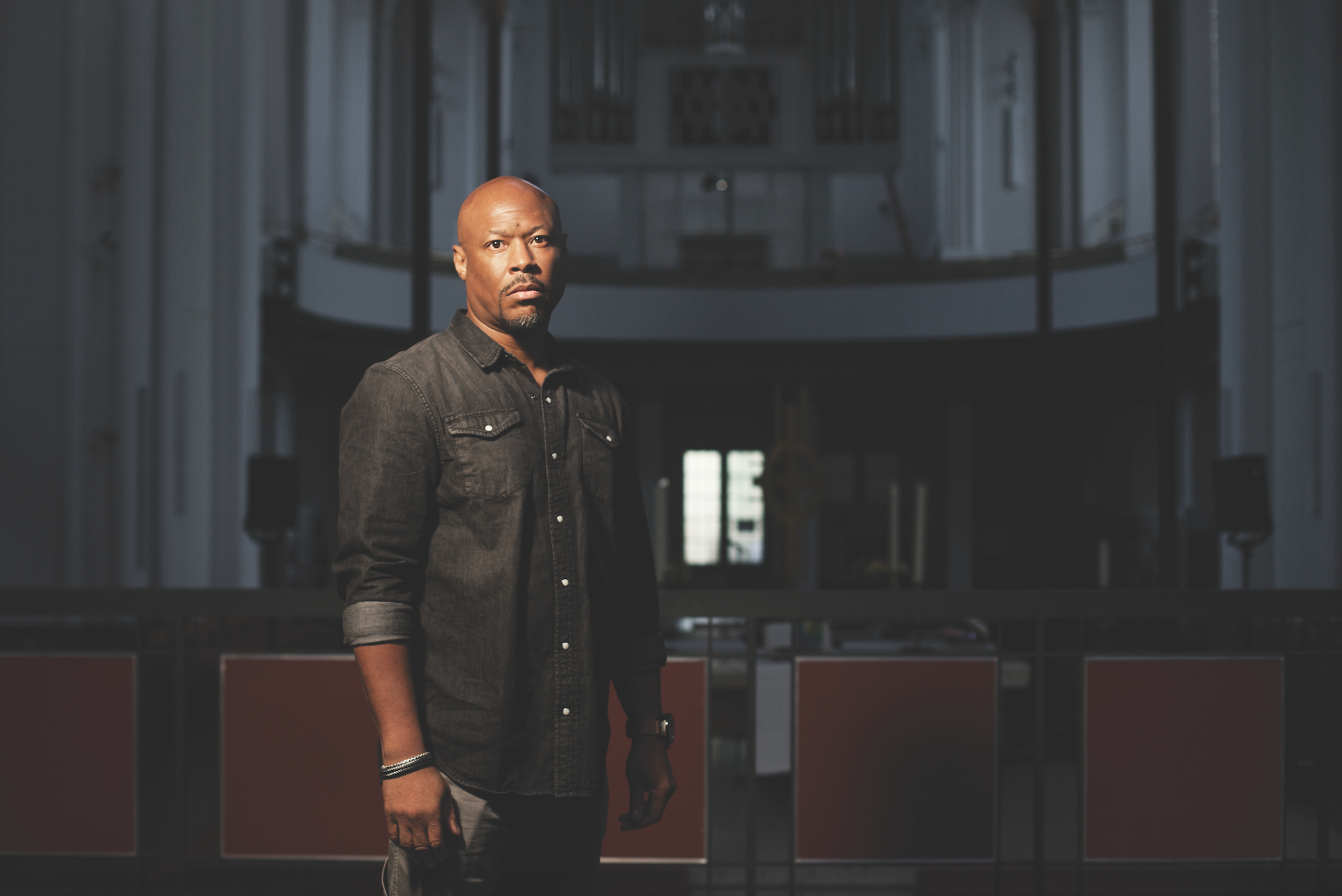
“Electronic music and techno: real, raw, unapologetic, in-your-face techno, needs to expose itself. Techno needs to tell stories now, and not just make rhythm tracks. The best is yet to come for this sound. To reflect our inner souls, that’s what we need to do, is be transparent. We haven’t done that yet”
Something of a holy grail from Hood’s career is his ‘Pro Mix’. Recorded over 15 years ago, it never saw official release due to licensing issues, but charts music that made an impact on Detroit pre-techno — an era he describes as, “Amazing, progressive, avantgarde” — including cuts from ABC, Kano and Gino Soccio. “I remember going to clubs that played a lot of alternative music, like Depeche Mode, Front 242 and Nine Inch Nails,” he says. “But then they also played techno, acid house and hip-hop. That’s how Detroit was. It embraced music.” He also says seminal radio DJ the Electrifying Mojo was pivotal during this time. “Every night at 10 o’clock, class was in session,” he says. “I don’t think any of us would exist without him. He played everything from Prince to Parliament/Funkadelic, but then he played Dead Or Alive and Phil Collins, and we loved it. We soaked it up. Again, that was Detroit. I don’t know any other city that embraced music the way we did. It was something in the water.”
Despite being revered as one of Detroit’s finest musical exports, Hood has lived in Alabama for a number of years, after moving there during a period of creative struggle. “When we first moved, my studio was packed up for about two years,” he says. “I didn’t feel like creating anything. I thought about becoming a truck driver. I was seeing the end of myself creatively. As an artist. I didn’t know what I was supposed to do.” But while some artists live off the legacy of their early years, never quite rekindling their creative force, Hood rebuilt his studio and rediscovered his musical self, going on to deliver tracks such as ‘Baby, Baby’, one of the most omnipresent techno tracks on dancefloors in the last five years. So where does Hood regroup and recharge outside of music now?
“I have by-myself meetings on the lawnmower,” he smiles. “I like to cut the grass. To go back and forth up and down the field, because I’m alone with God, alone with my thoughts, and I talk to myself.” After an extended period of decline, culminating in the financial crisis following the conviction of a corrupt mayor, Detroit has seen something of a renaissance in recent years, with a number of initiatives to rebuild and regenerate destroyed or abandoned buildings. And Hood’s still clearly passionate about the city, speeding up when he talks of the place where he grew up, often struggling to get his words out fast enough in excitement.
“We miss Detroit,” he says. “It’s unique with its creativity and progressive attitude. That’s still there. We see new businesses popping up and people wanting to do things for themselves, not rely on GM, Chrysler and Ford, and breathe a new renaissance and attitude into the city. We’re gonna rise from the ashes. That’s what Detroit techno represents. We made something out of nothing. We’re resilient, resourceful people. And we’re survivors. The thing I want to inject into Detroit is not just to survive, but to thrive. We constantly think about buying a home there.”
Thirty years since Hood helped first break techno to an international audience from the Motor City, he goes on to say he has concerns over where electronic music is currently heading. “EDM and EDM-sounding records have slowly chipped away at the raw groove,” Hood says. “Real music and the realness are being lost, and we have to care for it. It’s a delicate thing. We need to experiment. We need to step outside the box, because things are changing.” Despite that, he also says he is still as motivated by music as he’s ever been.
“We haven’t seen the best of techno yet,” he says. “Electronic music and techno: real, raw, unapologetic, in-your-face techno, needs to expose itself. Techno needs to tell stories now, and not just make rhythm tracks. The best is yet to come for this sound. To reflect our inner souls, that’s what we need to do, is be transparent. We haven’t done that yet. Like me telling you about my depression.” Reflecting on how the music saved his life, Hood says he’s never been happier. “I’m full of joy,” he smiles. “I’m grateful I made it through a lot of things that should have killed me. If I never make music again, if I never DJ again, I’ve done so much. I’m at peace. I’m a very rich man. Maybe not monetarily, but rich in spirit, rich in love. I have everything I need, so I don’t have to want for anything. I’m so blessed, I’m beyond good. I’m great.”
He concludes, through the timing of his sermon and Jafa’s exhibition, that his trip to Berlin has been a particularly poignant one. Something he perhaps most eloquently outlines in his message in the gallery’s visitor’s book:
“The exhibit took a photo of my soul. It captured the emotion of not only ‘Minus’ but my life’s work. I must continue to create, inspire, and be inspired as my spirit embraces what I just witnessed.
“Sincerely,
“Robert Hood.”



